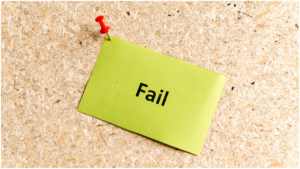
For years now, I’ve had problems off and on with my back and neck. I’ve stayed active, gone in for regular massages, and eventually started chiropractic to get relief. And it worked. For about 13 years.
Last summer, when I suddenly had time on my hands and wasn’t glued to an ergonomic desk setup, the flare ups became unbearable. It was time to go back to the doctor to find out what was going on.
The news wasn’t great. Xrays and MRI’s later, I definitely had work to do, but it seemed like it would be more of the same. Until I went in for Physical Therapy. The PT was blunt. We needed to interrupt the patterns, which seemed to be giving me relief, that were making my condition worse.
Step one was giving up my workouts, which scared me to death. I also had to be willing to endure more pain in the short-term to create space to heal. Then, and only then, could I go back to my workouts as healthy and productive.
Recognizing patterns
When we experience pain, we want to relieve it. That’s to be expected. In my case, I’d row, roll my back out, or get an adjustment. It didn’t fix the underlying problem, but it convinced my brain that I was feeling better. Better enough to keep going.
But things weren’t better. They were getting worse. I had just tricked my brain into thinking things were safe. Until conditions got too bad to ignore.
As I was understanding this pattern, it reminded me of trying to navigate toxic environments.
How often do we find ourselves in a situation that causes us mental or emotional anguish? At first, maybe we question that twinge. Did it really happen? Then we convince ourselves it’s not that bad. We endure. Maybe we start to contort ourselves and adjust our behaviors to fit.
When we look back at the pattern, how often are we ignoring the pain, telling ourselves it’s not that bad, or making an adjustment to convince our brains we’re safe?
When we do those things, over and over again, we’re compounding the problem. Ignoring a larger pattern and doing more significant damage longer term. Taking joy and quality of life away from us while we figure out how to exist in a toxic environment.
Interrupting Patterns
How do we know we’re in an unhealthy pattern? Maybe we struggle to get out of bed in the morning. We plaster a smile on our face when we want to scream. Internal dialogue is a mantra of “just get through the day” or “just get to Friday.”
If we are regularly talking ourselves through a minefield, and longing for weekends and vacations to get a break, we’ve likely found ourselves in an unhealthy pattern that could be the sign of a toxic environment.
How do we interrupt the pattern? What I learned about my neck was counter intuitive. I had to slow down, stop pressing forward with my normal habits, and be willing to experience the pain. I had to create space to convince my brain it was safe to relax so my muscles would stop firing all the time. I had to stop the constant reacting to get back into alignment.
Unhealthy patterns start with stepping back and recognizing them. Recognizing what is triggering them and deciding to do something different.
In the case of a work environment or relationship that is unhealthy, it means understanding how we are out of alignment and creating boundaries to adjust.
It’s going to be painful. Others don’t like it when we’ve allowed them to treat us a certain way and suddenly we are standing up for ourselves. Advocating to get ourselves back in alignment with our values and sense of self. We may even feel uncomfortable using our voice.
We have to be willing to endure the discomfort in the short-term to get to a healthy long-term. If those measures don’t work, because they aren’t respected or possible, it might be time for more drastic measures, like looking for a new job.
Reintroducing a Healthy Pattern
There’s going to be stress in work and life. In the case of my neck and back, I want to be able to reintroduce the stress of heavy workouts.
But it has to be safe to do so.
Adding stress to an already unhealthy pattern sets us up for damage. To our relationships and our health. By creating space from the pattern to recognize it, we can identify ways to interrupt it.
Then we have to hold to that new pattern. We have to retrain our brains that the healthy response is the right one, instead of our old automatic responses. It helps to be mindful of our triggers, our boundaries, and preferred new responses. And to practice.
Because even if we go to a new environment or relationship, we are the constant. We bring our patterns with us.
Maybe we need an accountability partner or coach, like my PT. Someone to help us identify the pattern and practice ways to interrupt it. To check in to see how we’re doing and whether more extreme measures might be necessary.
Once we’re consistent in the healthy patterns, we can add stress in the form of new challenges. Like adding weight to bones and muscles prepared to take it.
As we add stress, it’s worth remembering to look for warning signs. When discomfort arises, are we holding our boundaries? Are we ignoring the pain and pushing through? Adjusting for comfort?
Healthy patterns require discipline in how we show up, whether it’s in our bodies or environment. That may mean short-term discomfort, but they are worth the long-term joy and quality of life that’s added.








